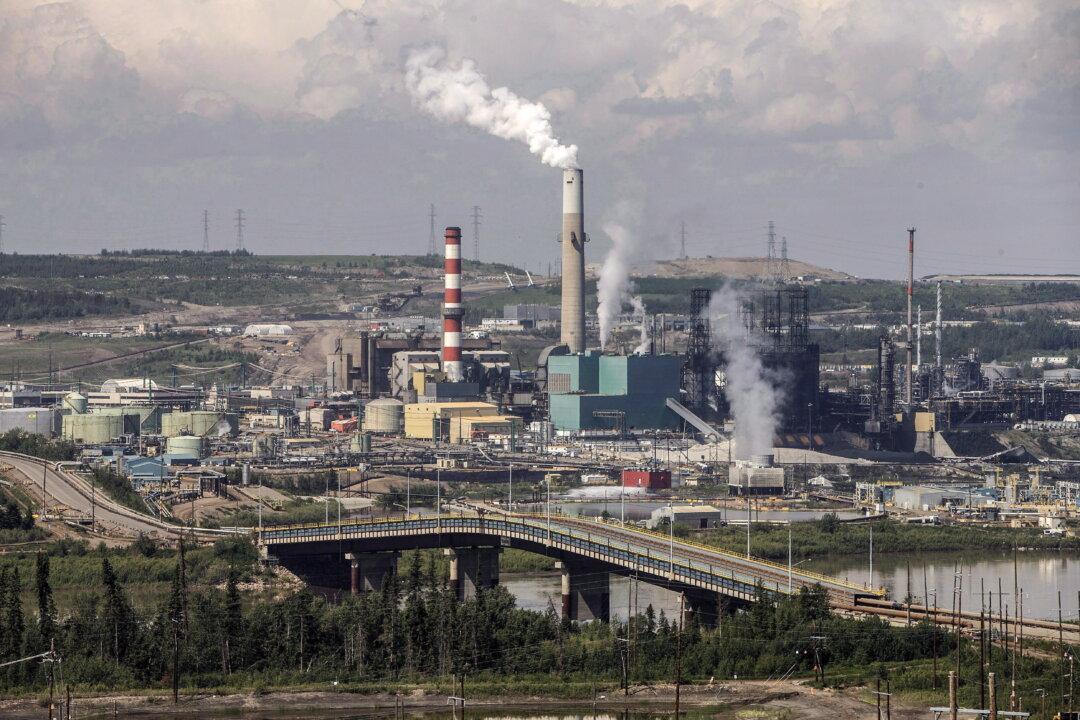News Analysis
While Canada has temporarily been spared crushing 25 percent tariffs on all exports by U.S. President Donald Trump, several economists say it will likely need to provide economic concessions by opening up several industries that have long been protected by Ottawa.
“There’s a bunch of stuff he’s going to put on the table. And his idea will be, ... ‘If you don’t take it, then we’re going to crush you,’” said Eric Miller, president of the Rideau Potomac Strategy Group geopolitical advisory firm. “And the bottom line is that this is no way to live.”
Concern over Trump’s tariffs was reignited this week when he imposed 25 percent tariffs on steel and aluminum imports from all countries, including Canada. The U.S. president also again
said Canada would be better off as an American state.
The first round of Trump’s tariffs on Canada, which were originally set to take effect on Feb. 4 but were
paused for 30 days, have been focused on forcing action to stop the flow of fentanyl and illegal migration into the United States. Meanwhile, Trump has also ordered his officials to probe existing trade relations and recommend tariffs as needed. In addition, he has said he wants to open up for renegotiation the United States–Mexico–Canada Agreement (USMCA), which he negotiated during his first term as president.
Miller said in an interview that Trump is likely to ask for concessions related to softwood lumber, the automotive industry, and transshipment, which refers to the practice of moving cargo from one country to another by way of an intermediate country as a way of avoiding trade restrictions.
Miller said Trump also wants to “end supply management as we know it,” which could be politically tricky given the “relative power of dairy farmers in Canada.” Canada’s supply management system regulates the production and demand of dairy and poultry products, and it includes tariffs as high as 300 percent to do so.
During the USMCA negotiations at the time of Trump’s first term in office, Canada made adjustments to its supply management system to provide new trade privileges exclusively for the U.S. dairy market.
On Jan. 29, Trump’s pick for commerce secretary, Howard Lutnick, said he wanted to see more U.S. dairy products exported to Canada and accused Ottawa of treating American farmers “horribly.” On Feb. 3, Trump also lamented that Canadians “don’t take our agricultural products for the most part—our milk and dairy.”
International Trade Minister Mary Ng said on Feb. 6, days after the Trump tariffs were paused, that Canada would
not make concessions around its supply management system.
Miller said Ottawa will face a “fundamental question” of whether saving supply management is worth sacrificing the rest of Canada’s economy to 25 percent tariffs.
Ottawa may need to again provide U.S. farmers with more access to the Canadian market, raising it from the current 3.5 percent market share that it established during the first round of trade renegotiations.
Digital Services Tax, Protected Industries
Ian Lee, an associate professor at Carleton University’s Sprott School of Business, said he believes that if Ottawa were to offer to open up its banking, supply management, and telecom industries—as well as get rid of its Digital Services Tax and provide a plan to increase military spending to 2 percent of GDP—the U.S. tariffs would be less likely.“I’m not plucking things out of thin air and making them up. I’m basing it on what’s been said on the record, in writing or verbally by President Trump, over the past [few] years,” Lee said in an interview. “That’s what he wants to see happen, so let’s go to a negotiating table.
Canada
implemented a 3 percent Digital Services Tax in June 2024, which applies to tech companies that receive revenue from Canadian subscribers and contributors. While Trump himself has not commented on the tax, some U.S. politicians and former U.S. Ambassador to Canada David Cohen have criticized Canada for refusing to delay the implementation of the tax.
Trump has also been critical of Canada impeding U.S. banks from doing business in the country, saying on Feb. 3 that it was one of the things he talked about with Trudeau. Canada’s banking sector is mostly dominated by the “Big Six” banks, some of which have a large market share in the United States, such as TD Bank and BMO.
Additionally, Canada’s telecommunications sector has long been
controlled by the “big three” companies, which has prevented competition from U.S. companies and resulted in higher prices for Canadian consumers.
Lee also said he has not seen any Canadian politicians calling for the renegotiations of USMCA to be moved up, despite Trump suggesting he wants to do so before the 2026 deadline. Lee said Ottawa should be “jumping at that” opportunity, as it may give Canada an off-ramp for tariffs.
Lee said he does not believe Canada should put retaliatory tariffs on the United States, as that would further harm Canadian companies and increase unemployment. Trudeau had threatened
Canada’s own tariffs of 25 percent on $155 billion worth of American products starting on Feb. 4.
“Our leadership believes that the Trump administration is going to change because of our retaliatory tariffs. I believe that’s wrong. I believe what it’s going to do is cause even greater damage to the economy,” he said.
Trevor Tombe, a professor at the University of Calgary’s Department of Economics, also does not believe Canada should respond with dollar-for-dollar tariffs on the United States.
“It is very hard for a small country to exert meaningful pressure on the United States economically,” Tombe said, adding that Canada should focus on strengthening its own economy while engaging with the United States on issues like border security, military spending, and trade imbalances.
“[We should] try and have that kind of a dialogue, if you will, and look for ways of providing President Trump with a win,” he said in an interview. “But we shouldn’t be under the impression that tariffs that we levy would meaningfully harm the U.S. economy.”
While on the economic side additional Canadian tariffs would add more pressure on the domestic economy, Canada has used strategic tariffs in the past and seen U.S. tariffs removed afterward. In
2018, after the first Trump administration imposed tariffs on Canadian steel and aluminum, Canada retaliated, and the tariffs were removed on both sides in 2019. This time, however, the situation on the steel and aluminum tariffs is not exactly the same, as the tariffs are uniformly applied to all aluminum and steel imports to the United States, not only select countries like Canada.
Trudeau has said that he will try to convince the United States to forego the steel and aluminum tariffs, but added that Canada will work with “international partners and friends” to provide a “firm and clear” response to the tariffs if necessary. On the response to the broader threatened U.S. tariffs, Trudeau has said that Canada’s proposed retaliatory response was “strong but appropriate,” while Conservative Leader Pierre Poilievre has called for “dollar-for-dollar” tariffs that would have maximum impact on the United States.
Military Spending
Canada has long been criticized by the United States for not spending enough on defence, but no president has been as critical of NATO countries not meeting the 2 percent of GDP spending target as Trump. In February 2024, during his presidential campaign,
Trump said he would let Russia do “whatever the hell they want” to any NATO country that failed to meet the military spending target.
More recently, on Feb. 9,
Trump said Canada does not spend enough on its military because “they assume that we’re going to protect them. That’s not an assumption they can make.” When speaking about imminent tariffs on Canada on Feb. 2, U.S. Vice President JD Vance
criticized Canada for not meeting its NATO spending targets, adding that this was tantamount to the United States being “taken advantage of.”
Canada spent just 1.37 percent of its GDP on defence in 2024, making it one of eight countries in the 32-member alliance not meeting the target. Ottawa has said Canada will meet the defence spending target by 2032, but the Parliamentary Budget Officer has
said this will likely take longer unless government spending increases.







